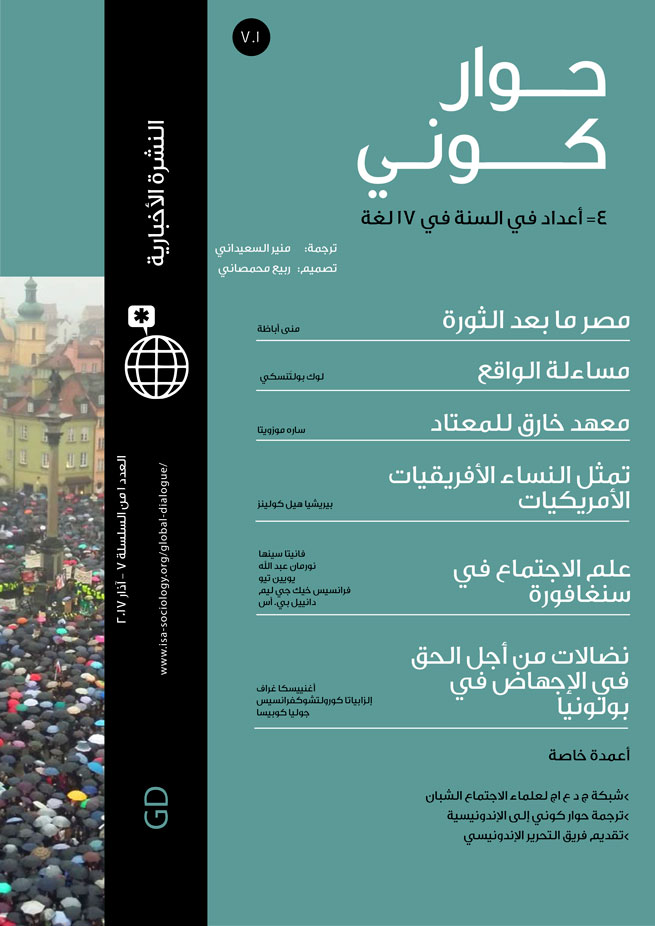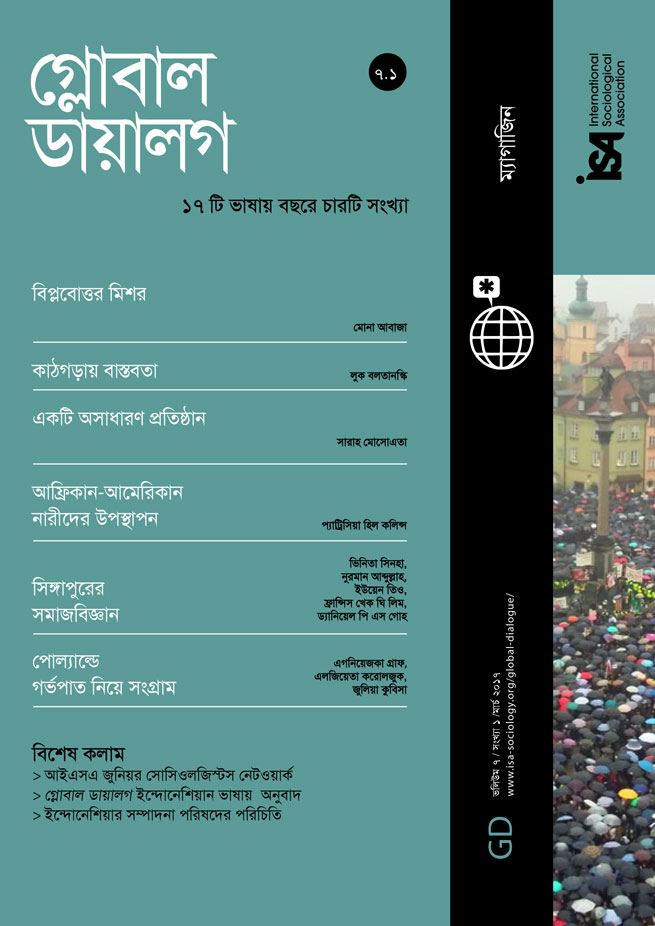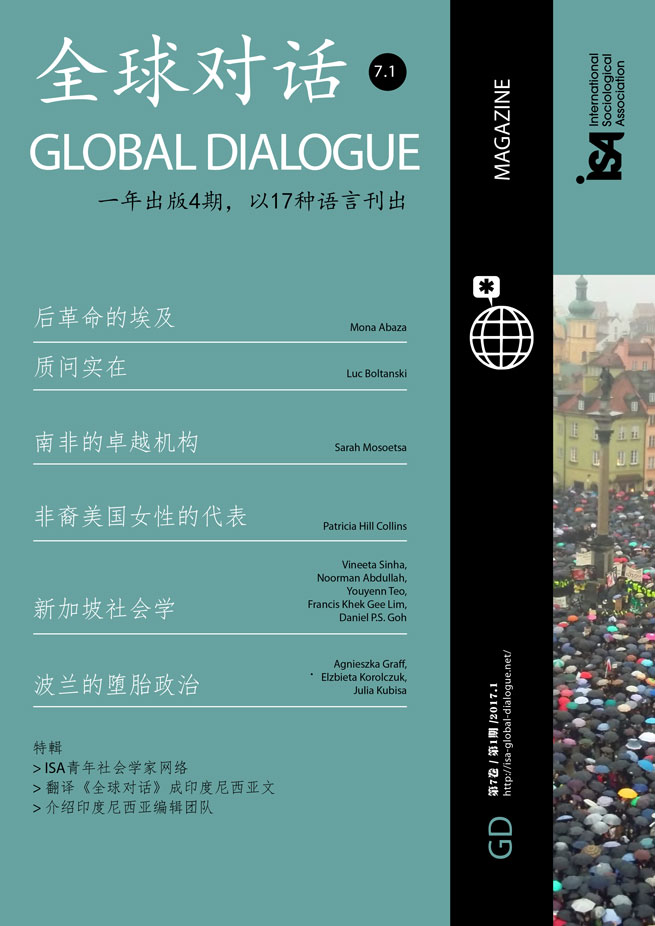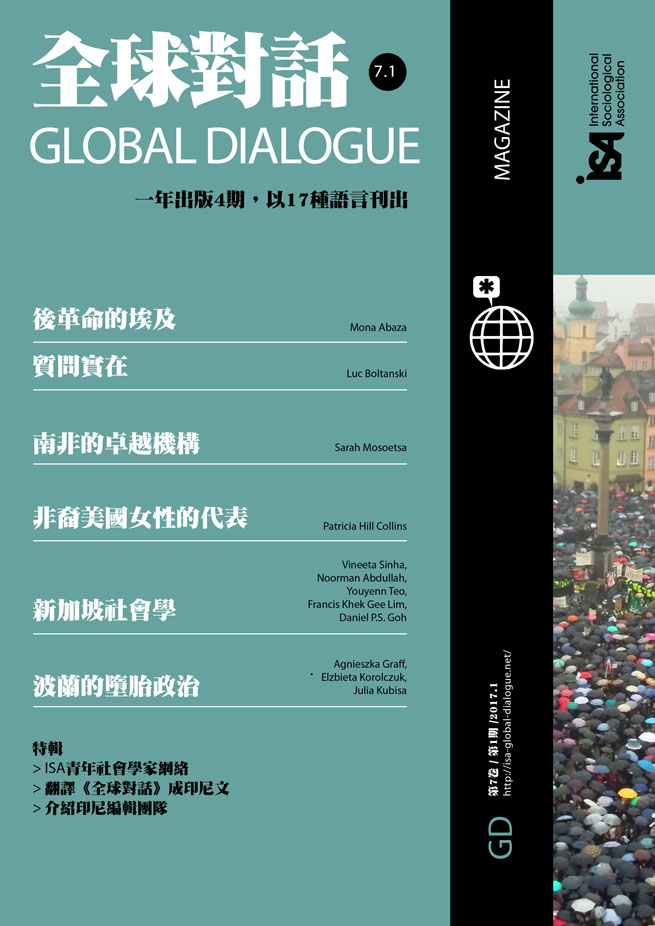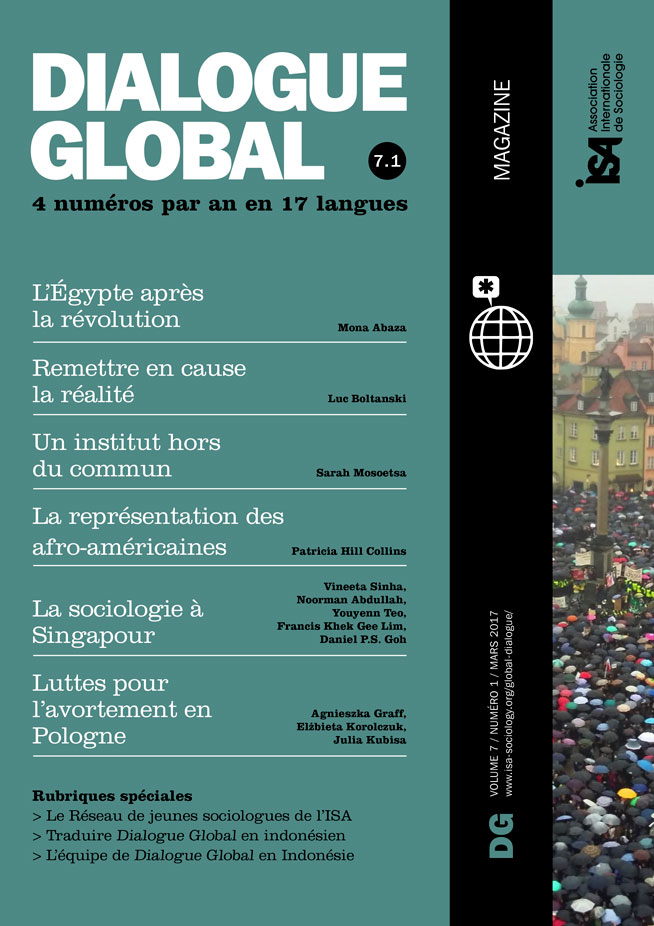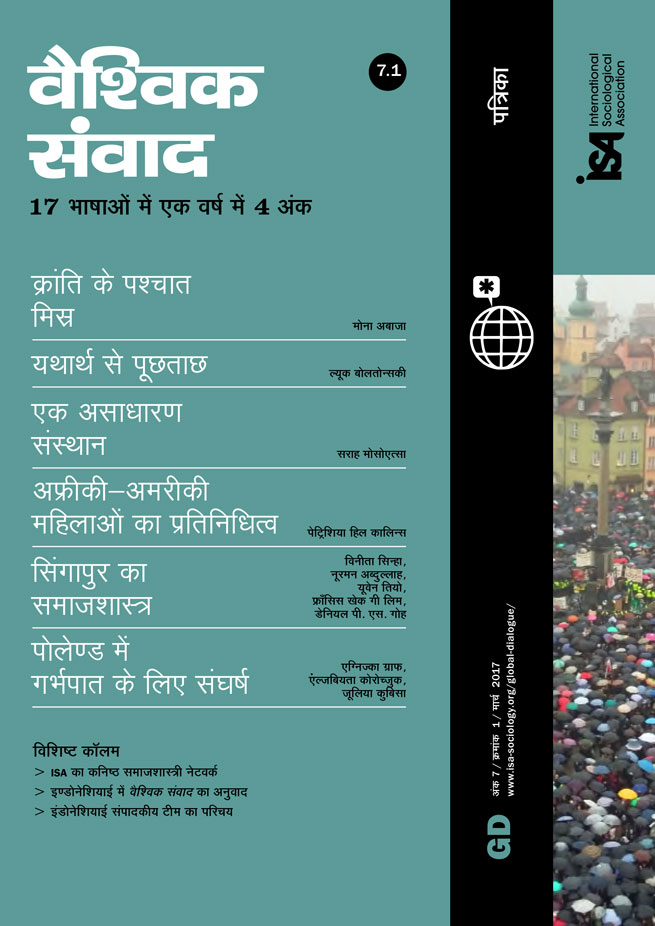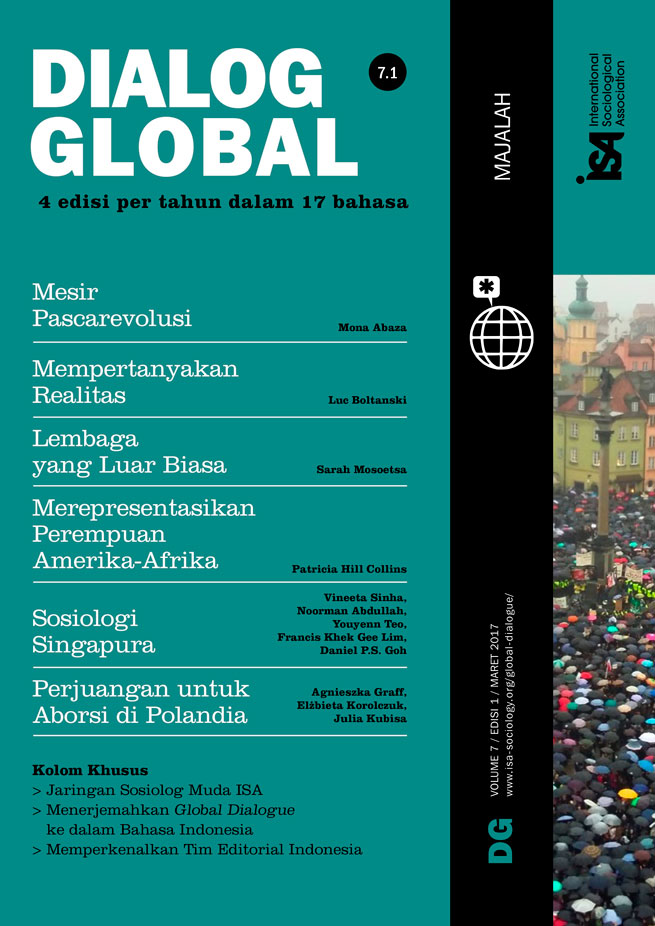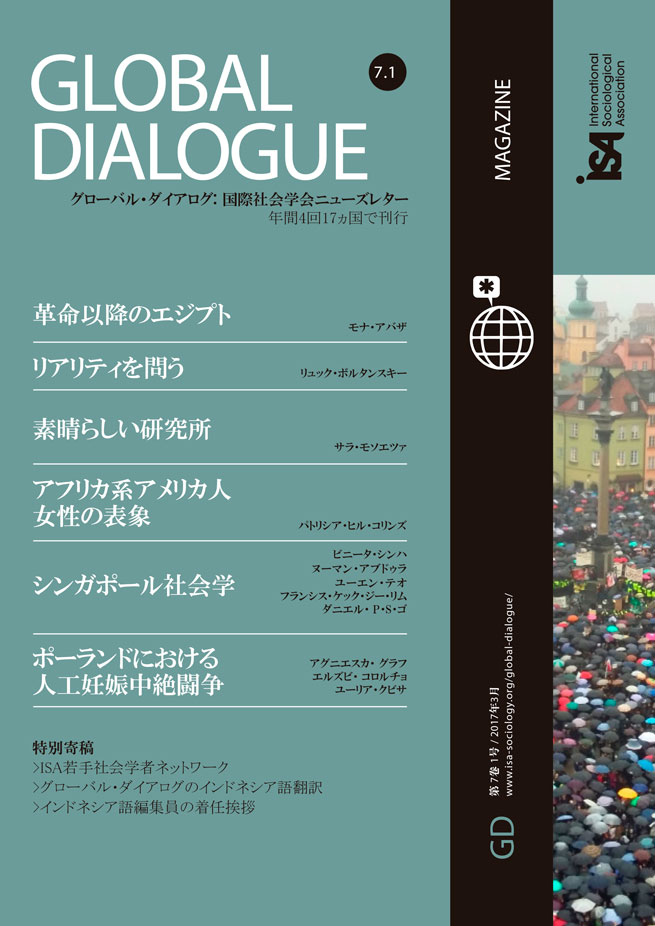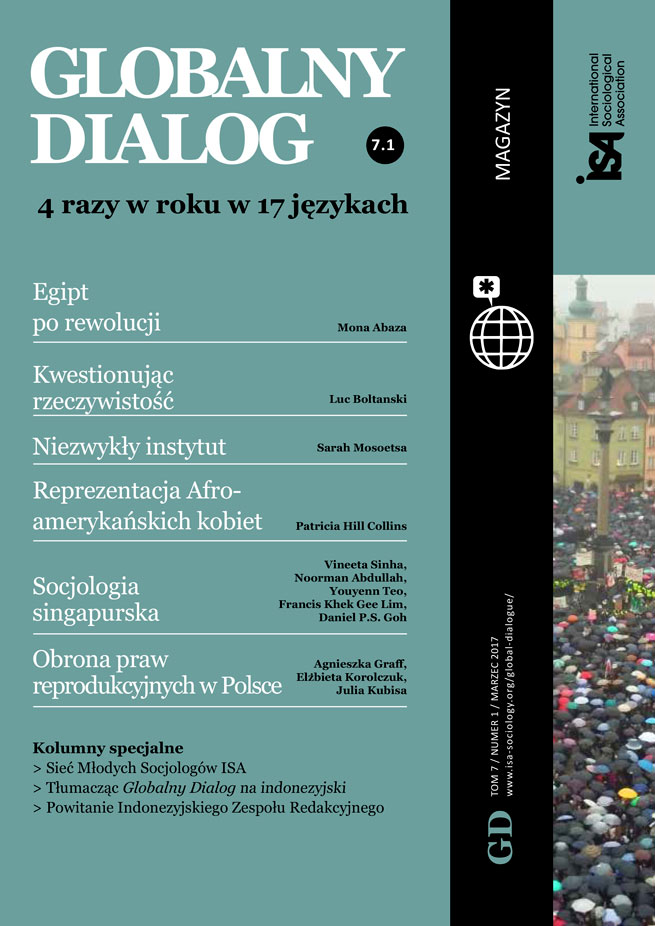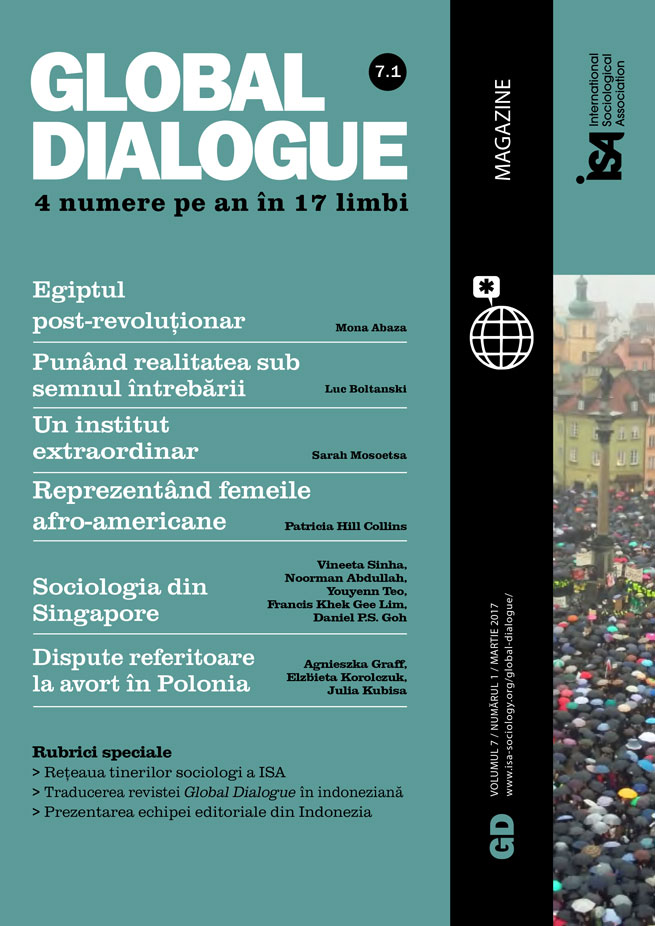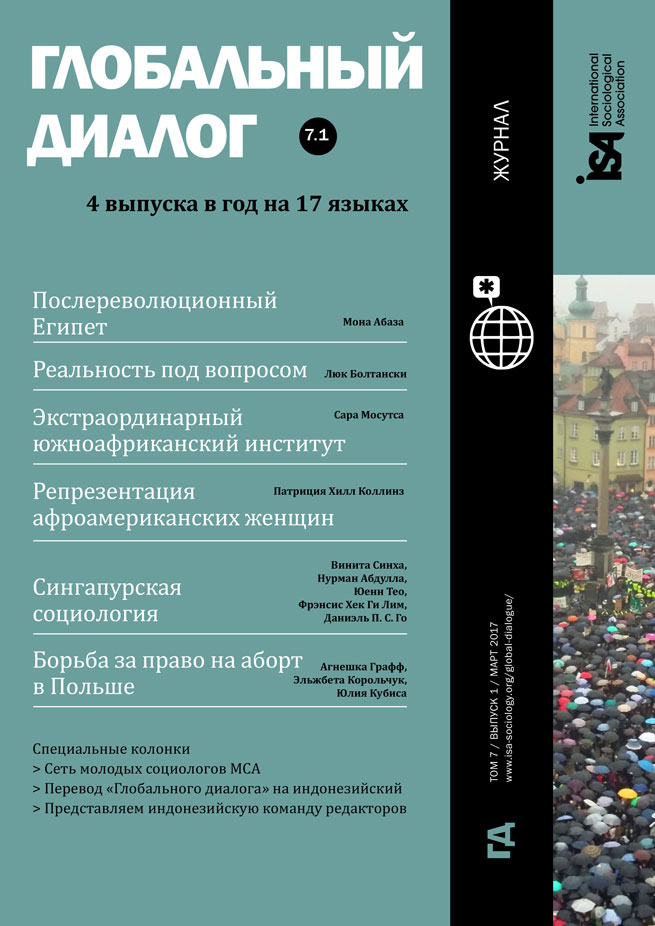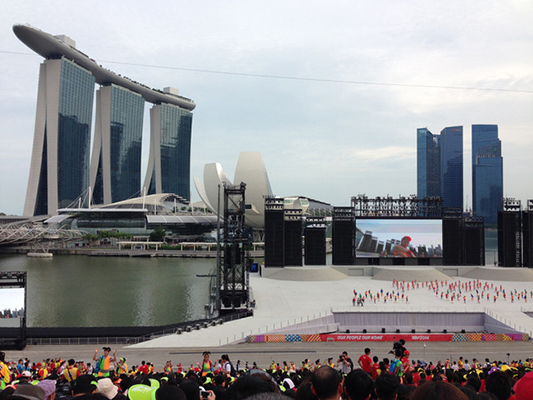Read more about Singapore Sociology
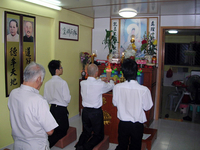
After Secularism
by Francis Khek Gee Lim

After Meritocracy
by Youyenn Teo
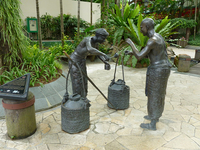
After Multiracialism
by Noorman Abdullah
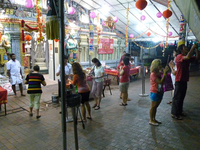
After Lee Kuan Yew
by Vineeta Sinha
February 17, 2017
There are two founding stories told about the national museums and history textbooks in Singapore. The first and long-standing one told since independence in 1965 is the founding of the British settlement on the island in 1819 by Sir Stamford Raffles of the East India Company. In this story, the genius of Raffles was said to be his recognition of the strategic geographical location of Singapore, sitting at the tip of the Malay Peninsula, right at the junction of trade winds between the Indian Ocean and East Asia. With good governance and open immigration, the settlement grew from a Malay fishing village into a modern multiracial metropolis. The second story, more recently accepted, is about the earliest known settlement on the island, Temasek. Based on archaeological finds and records of early Asian explorers, Temasek was a fortified city and cosmopolitan trading port established in the fourteenth century by a prince of the declining Srivijaya Empire. It then came under the control of the Sultanate of Malacca in the fifteenth century. After Malacca fell to the Portuguese in 1511, the city was abandoned and the place reverted to the Sanskrit name of the island: Singapura.
The shared ending point in both founding stories is the genius of the People’s Action Party, Singapore’s ruling party since 1959, when universal suffrage and self-government was first established for the British colony, thereby recognizing the features of the city that would make for its success. The common thread in both stories is that globalization was not only integral to Singapore’s success, but also crucial for its survival. Globalization is Singapore. Thus, even when compelled into forging an imagined national community in 1965, after Singapore was involuntarily separated from the Federation of Malaysia, the ruling party ideologue S. Rajaratnam, who was central to the young country’s nation-building efforts, spoke of Singapore as a Global City in 1972. It is now hailed as a prescient speech, as Singapore is lauded today for its successful transformation from a mercantilist economy and then industrial economy into a post-industrial global city acting as a key financial and services hub in globalizing Asia.
But Rajaratnam’s insight was not a perfunctory argument about the political economic need for Singapore to become a global city. Drawing from Arnold Toynbee, Rajaratnam was making a point steeped in post-Hegelian Enlightenment that Singapore is a global city. Singapore must remain and develop as a global city to be true to its essence and to fulfill its destiny in history. Nation-building and national industrialization must not proceed in manner antithetical to Singapore’s continued development as a global city. Therefore, the decisions to keep the economy attractive to multinational corporations and society open to immigration were not mere pragmatic imperatives for economic survival, but in keeping to Singapore’s essential character as a global city.
The Department of Sociology at the National University of Singapore was established in 1965 as part of the modernization efforts. For the past 50 years, especially in the early decades, anthropologists and sociologists at the Department, most of whom received post-graduate training from the best universities in the West, were involved in the designing, and sometimes implementation, of government social policies. These included helping the vast majority of the population adjust to public housing, the management of ethnic and religious pluralism, tackling marriage and fertility issues, and other issues associated with the government’s intensive social engineering campaigns to modernize behavior and worldview in one generation.
Critical scholars today might see this as the complicity of sociologists in the making of the hegemonic ideology and autocratic domination of the ruling party. But this is a far too easy accusation to make in hindsight. In the immediate years after independence, any Singaporean or foreign resident sympathetic to the postcolonial aspirations of a newly independent people would have rallied behind the compelling vision of the ruling party, especially when the vision was articulated with depth by ideologues and thinkers such as Rajaratnam. This was even more so when there was a lack of alternative narratives and discourses as to how Singapore could be true to its cosmopolitan and worldly nature, after the defeat of the Left during decolonization and after the selective appropriation of socialist ideas and policies, shorn of elements linked to international communism, by the ruling party.
The important shift in Singapore sociology came in the 1990s. The turning point was arguably the publication of Chua Beng Huat’s Communitarian Ideology and Democracy in Singapore in 1995, when he broke down the dominant ideology of the ruling party and gave it a name. This was followed by Chua’s book on public housing published in 1997, in which he argued public housing, where more than four-fifths of Singaporeans live, was the materialization of the communitarian ideology that made every citizen a stakeholder in the political economic system held together by the ruling party. It was not autocracy that sustained the ruling party’s continued dominance, but, in the vein of Gramscian theory, the hegemony of its ideas materialized in the everyday life of the people that naturalized single-party rule. A new generation of Singaporean anthropologists and sociologists responded to this revelation by seeking out alternative narratives and practices to document and study, as the preceding four essays in this dialogue series have pointed to.
Crucially, this shift in Singapore’s sociology came at a time where Rajaratnam’s Global City was fast becoming what would come to look like Saskia Sassen’s global city. The government was embracing neoliberal globalization and remolding the economy to exploit the acceleration of capital, commodity, and migratory flows. A new vocabulary emerged that came to be marked by a dichotomy held together by the conjunction “and.” Citizens were called to be a “cosmopolitan” and a “heartlander,” to confidently traverse the world and to be comfortably rooted in the “local” lifeworlds of public housing. The country was said to be a nation and a global city, no longer the nation that is the global city. The diversity to be enhanced by quickened immigration was to be both multiracial and multicultural. In 1989, the Institute of Southeast Asian Studies published the landmark Management of Success: The Moulding of Modern Singapore, edited by two geographers, comprising articles by many of Singapore’s first-generation social scientists that commemorated Singapore’s successful entry into the global capitalist system as an Asian Tiger. In 2010, the same Institute published Management of Success: Singapore Revisited, edited by sociologist Terence Chong, this time with articles seeking to understand the tensions brought on by neoliberal globalization.
If globalization is Singapore, then what makes for Singapore sociology after globalization? There are three possibilities: dystopian, utopian, and apocalyptic. In hindsight, I find my own article in the 2010 Management of Success as largely dystopian in approach. It examined governmental attempts to weave the new multiculturalism into the old multiracialism in order to manage the diversities brought on by immigration and resolve inter-ethnic tensions brought on by economic inequalities while maintaining political control. The tensions of neoliberal globalization are now layered into the contradictions of modernization in such a way that there is no way to resolve them except to always depend on a strong government to manage them. It was a decidedly Durkheimian frame, beginning with the problem of solidarity in a pluralist society and ending with the pessimism that dependence on the state for social integration and regulation is inevitable. The implication is that the search for alternative practices and narratives that have become prevalent in Singapore sociology is only useful because the state needs to renew its moral guardianship by appropriating these alternative practices and narratives into its cultural repertoire.
The second possibility is the utopian approach and we find this in the essays here. This approach evokes the spirit of Thomas More’s Utopia in the search for social, political, and religious customs of an ideal republic on an optimally populated island marked by democracy and equality. The emphasis is on minimal dependence on the government and the hope is for the space for individual autonomy and personal fulfillment to be enlarged vis-à-vis the state. People are found to be economically creative, socially conscious, and politically engaged. For some anthropologists and sociologists, the discovery and analysis of these spaces of hope in Singapore, sometimes coming into existence with the ironic help of neoliberal globalization, is enough. The belief is that such alternative stories would inspire students in the university classrooms, so that they would in turn go out and change the world. For some, they would go further and map, explicitly, the activism of ordinary people as well as of extraordinary people in changing the circumstances of their lifeworld. Yet, for others, as Youyenn Teo does in her essay published in this issue, they would call for self-conscious academic activism to bring such alternatives out to a broader audience so that the sociologist becomes a change agent.
Importantly, the utopian approach is neither oppositional nor radical in its politics, though it is likely to be misrecognized as such by the ruling elites jealous of their ideological dominance. The utopian approach is very much in line with Rajaratnam’s Global City vision. He ended his 1972 speech urging the press correspondents in the audience to help “equip our people intellectually and spiritually to make the global city […] into the heavenly city that prophets and seers have dreamt about from time immemorial” (The Straits Times, February 7, 1972). The utopian approach traces its lineage back to Augustine of Hippo through More.
The last possibility is the apocalyptic approach. It is politically untenable in conservative Singapore to write with this approach, but it is probably intellectually and even politically necessary to think through the questions that would be raised by such an approach. If globalization is Singapore, then what would happen when globalization begins to reverse, when the world system starts to de-globalize? This had already happened once in the 1920s and 1930s, and this was a tumultuous period where leftist and ethno-nationalist political mobilization in British Malaya laid the political ground for the violent conflicts of decolonization after the Second World War. In turn, the conflicts led to three national entities that were unimaginable half a century before: first the Federation of Malaya, then the Federation of Malaysia and finally the Republic of Singapore. These entities transformed local societies beyond what the earlier generation thought possible. What futures are unimaginable and unthinkable today? Whither Singapore society if the unimaginable happens? What would Singapore become after globalization, when it ceases to be the Global City?
Daniel P.S. Goh, National University of Singapore <dsong@nus.edu.sg>
This issue is not available yet in this language.
Request to be notified when the issue is available in your language.
If you prefer, you can access previous issues available in your language:
